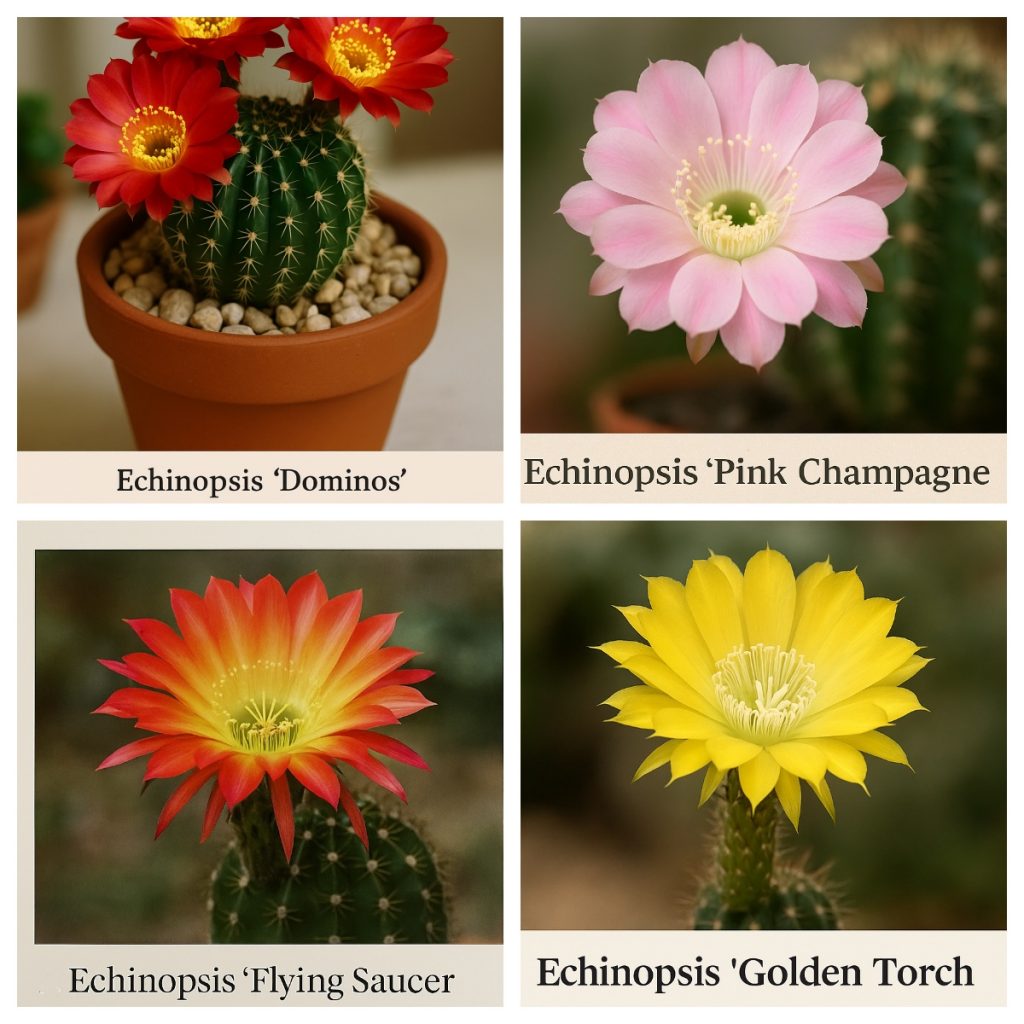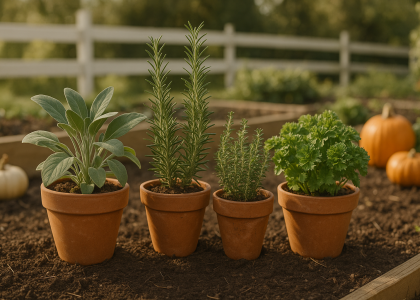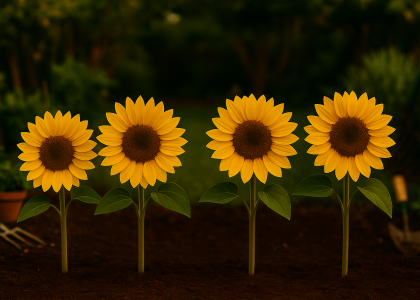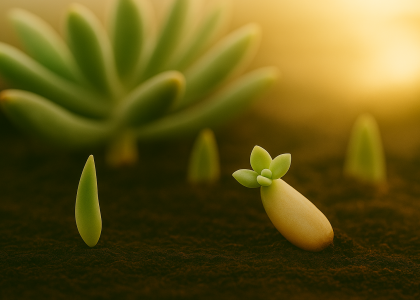Meet Echinopsis: A Firework in a Pot
If you're dreaming of a houseplant that thrives on sunshine, shrugs off neglect, and bursts into jaw-dropping blooms seemingly overnight — meet Echinopsis spp., also known as the Easter Lily Cactus or Sea-Urchin Cactus. These globe-shaped succulents are compact, photogenic, and can be surprisingly easy to grow indoors.
Their real claim to fame? Stunning, large, and short-lived flowers that explode in color — often at night — and create a dazzling visual display that’s nothing short of botanical fireworks.
"I couldn’t believe my cactus bloomed overnight — it felt like magic!" – Emily, Oregon

Why Echinopsis Is Perfect for Indoor Gardeners
- Compact Size: Most Echinopsis stay under 6 inches tall and wide — perfect for windowsills and small apartment gardens.
- Low Maintenance: Water sparingly, give them sunlight, and let the soil dry out between drinks.
- Spectacular Blooms: With enough light and a little seasonal rest, these cacti will reward you with breathtaking trumpet-shaped flowers in spring and summer.
- Great for Beginners: Resilient, pest-resistant, and forgiving — ideal for first-time plant parents.
How to Grow Echinopsis Indoors
1. Light: Place your cactus in the brightest spot you have. A south or west-facing window is ideal. In low-light climates, consider a grow light to trigger blooming.
2. Soil: Use a cactus or succulent mix — well-drained and airy. Add perlite or coarse sand to improve drainage if needed.
3. Watering: Let the soil dry out completely between waterings. During winter, water just once every 3–4 weeks.
4. Potting: Use clay or terracotta pots with drainage holes. Repot every 2–3 years in early spring.
5. Dormancy: Give your Echinopsis a cool, dry rest in winter (around 50°F/10°C) to promote blooming in the warm seasons.
Common Pitfalls to Avoid:
- Avoid overwatering — root rot is the #1 killer.
- Don’t place in low-light corners.
- Do not repot while the cactus is budding — it may delay or halt blooming.
Our Top Indoor Blooming Varieties
1. Echinopsis 'Dominos'
- Flower Color: Vibrant deep red petals with intense golden yellow centers
- Bloom Size: Medium-large (4–5 inches wide)
- Fragrance: Mild, earthy-sweet
- Stem Form: Round, deeply ribbed globe shape with short cream spines
- Bloom Time: Spring to midsummer, typically after a cool, dry winter rest
- Special Feature: One of the fastest bloomers among red cultivars; thrives in bright indoor settings
✅ Ideal For: Minimalist plant lovers who want bold color impact with compact space requirements
2. Echinopsis 'Pink Champagne'
- Flower Color: Delicate candy pink with semi-translucent petals and a light lemon throat
- Bloom Size: Medium (3.5–4 inches wide)
- Fragrance: Light citrus floral scent
- Stem Form: Glossy green and rounded with evenly spaced areoles and fine radial spines
- Bloom Time: Late spring and often reblooms in summer
- Special Feature: Subtle sparkle to the petals under morning sun — hence the name “Champagne”
✅ Ideal For: Indoor gardeners who appreciate pastel tones, fragrance, and romantic aesthetics
3. Echinopsis 'Flying Saucer'
- Flower Color: Striking bicolor gradient from golden yellow at the base to flaming red or orange tips
- Bloom Size: Extra-large (6–7 inches wide) — one of the largest in the genus
- Fragrance: Mild sweet scent
- Stem Form: Barrel-shaped cactus with pronounced ridges and spiky contrast
- Bloom Time: Mid to late summer
- Special Feature: Often blooms in flushes, with a surreal flying-saucer look when fully open
✅ Ideal For: Showpiece placement, time-lapse photography, and statement-making plant decor
4. Echinopsis 'Golden Torch'
- Flower Color: Cheerful sunshine yellow with pale white filaments and lemon throat
- Bloom Size: Medium to large (4–5 inches wide)
- Fragrance: Fresh and mildly citrusy
- Stem Form: Tall and slightly elongated, cylindrical or low columnar; fewer spines than average
- Bloom Time: Summer, often multiple blooms per cycle
- Special Feature: Glows under natural light; considered a mood-boosting plant by color therapists
✅ Ideal For: Bright kitchen sills or wellness corners needing a cheerful splash of yellow
See all top varieties in this photo guide →

Display Tips: Bring the Desert Bloom Indoors
- Solo Statement: A single flowering Echinopsis in a minimalist clay pot adds sculptural beauty to modern interiors.
- Grouped Greens: Combine with other small cacti or trailing succulents like string-of-pearls for a textured indoor garden.
- Bloom Watch: Set up a time-lapse camera — the overnight bloom is a magical moment worth capturing.
FAQ: Indoor Echinopsis Cactus Care
How do I get my Echinopsis cactus to bloom indoors?
Give it maximum sunlight, allow a cool and dry winter rest, and avoid overwatering. Blooming typically begins in late spring or early summer.
What is the best window for Echinopsis cactus?
A south-facing window with 6–8 hours of sunlight is ideal. West-facing works well too with supplemental lighting in winter.
Can Echinopsis be grown in small pots or terrariums?
Yes — they thrive in 4"–6" clay pots with excellent drainage. Avoid terrariums unless very dry.
How long do the flowers last?
Each flower typically lasts 1–2 days, but healthy plants may produce dozens of blooms in waves throughout the season.
Final Thought
In a world of leafy greens, Echinopsis spp. stands out with a flash of color and a lot of personality. They're not just low-effort — they’re high-reward. Whether you're short on space or just want to add a dash of surprise to your indoor garden, this cactus is the blooming miracle you've been waiting for.
📌 Want to see them bloom in your home? Explore our care guides and variety picks at Greenmuse.io.





